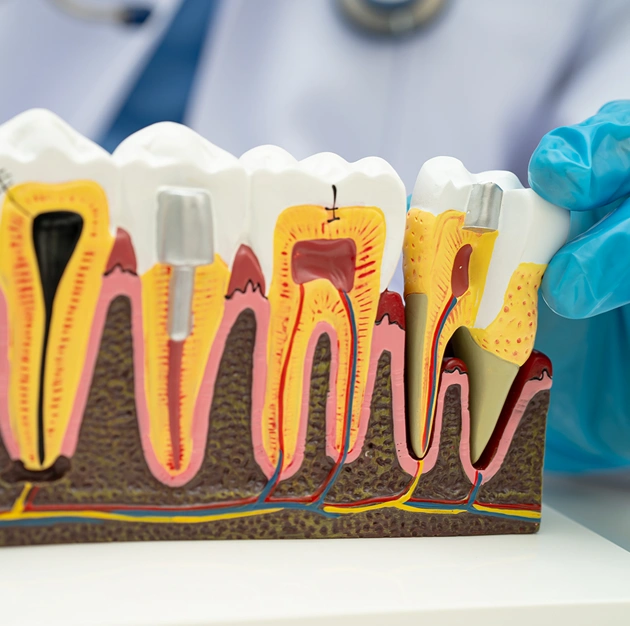
Root Canal Solutions for Lasting Relief
Root canals are a common dental procedure designed to treat teeth that have been severely damaged by decay or injury. The procedure involves removing the infected or inflamed pulp from inside the tooth, cleaning and disinfecting the area, and then filling and sealing the tooth to prevent further damage. Root canals are often necessary to save a tooth that would otherwise need to be extracted. The procedure is performed under local anesthesia.
Book online Here
Why Should I Get a Root Canal?
Root canals can save your natural teeth and prevent the need for dental implants or bridges. If left untreated, an infected tooth can cause severe pain and lead to serious health complications, including abscesses, swelling, bone loss around the tip of the root, and even systemic infection. By removing the source of the infection, a root canal can alleviate pain and help preserve your oral health. Regular dental check-ups can help identify potential problems early and prevent the need for this treatment.
The Benefits of Root Canals
- Pain relief: One of the primary benefits of a root canal is immediate relief from the often severe pain caused by an infected tooth. The procedure eliminates the source of the infection, thereby alleviating the associated discomfort.
- Preservation of natural teeth: Root canals allow for the preservation of your natural teeth, maintaining your natural bite and preventing the need for artificial replacements. This is beneficial for both cosmetic and functional reasons, as natural teeth often look and feel better than artificial ones.
- Prevents spread of infection: An infected tooth can lead to more serious health issues if not treated promptly. A root canal removes the infection, preventing it from spreading to other teeth or into your bloodstream, which could lead to more serious health complications.
The Root Canal Treatment Process
Examination and X-ray
During this initial stage, the dentist conducts a thorough oral examination to evaluate the health of the affected tooth as well as the surrounding gums and teeth. X-rays provide a detailed view of the tooth's structure, highlighting the extent of decay or damage, and revealing any infection in the surrounding bone. They are instrumental in planning the precise approach for the root canal treatment, ensuring that all areas of infection or damage are addressed.
Anesthesia and Access
Next, local anesthesia is administered to numb the area and ensure comfort throughout the procedure. After the area is sufficiently numbed, the dentist proceeds to create an access point in the tooth. This is typically done by drilling a small opening in the crown of the tooth, which allows the dentist to reach the infected or damaged pulp inside.
Cleaning and Sealing
The final step is the placement of the filling. The filling material will be placed into the cavity, then shaped and polished to match the rest of your tooth. This gives a natural appearance and ensures that your bite is correct.
Frequently Asked Questions
Check out these frequently asked questions, or call us to speak with our team.